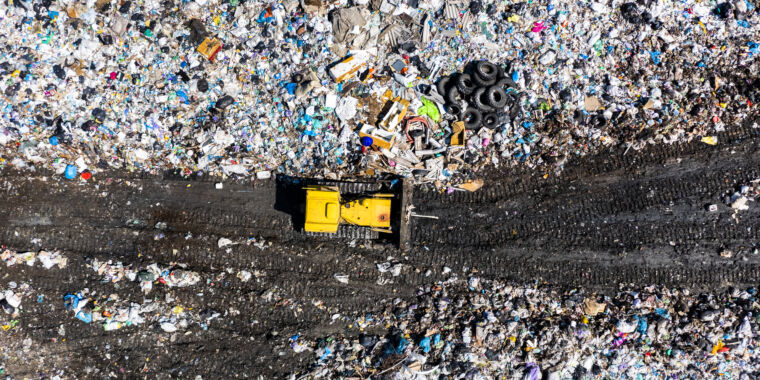
Plastic is becoming a plague on Earth. Not only are landfills bursting with it, but it has also polluted our oceans to the point that a tiny creature that had apparently made microplastics part of its diet was named Eurythenes plasticus. Can we possibly hold back the spread of a material that piles up faster than it could ever decay?
There might be an answer, and that answer is fungus. Researchers from the University of Kelaniya and the University of Peradeniya in Sri Lanka have discovered species of fungi that can break down polyethylene—the same type of plastic used for bags, bottles, cling wrap, takeout containers, and more. These fungi have one thing in common: They normally break down hardwood, which otherwise does not decay quickly. While hundreds of fungi and other microorganisms are known to break down various plastics, it was previously unknown that these particular hardwood-eating species could degrade polyethylene.
“Microbial biodegradation of plastics is a promising strategy to depolymerize petroleum-based plastics into monomers or mineralize them into carbon dioxide and water,” the researchers said in a study recently published in PLOS ONE.
The breakdown
How difficult can it be to break down hardwoods such as ironwood or ebony? It’s hard (pun somewhat intended) because the wood is held together by the polymer lignin, which is found in the walls of cells within the wood and gives it its strength. Lignin is tough but can be broken down and depolymerized by the right enzymes.
When the research team found dead hardwood trees decaying in a forest reserve, they became curious because these trees do not break down easily. They gathered fungi samples that they removed from the wood and brought them back to their lab. The fungi were then isolated by species, with each species placed into a different container and given pieces of hardwood and sheets of polyethylene to feast on.
The team wanted to compare the plastic-eating abilities of the fungal species and determine each species’ production of an enzyme that breaks apart lignin. The extent to which plastic and hardwood deteriorated was determined by comparing the weight of those materials before and after exposure to the fungi. Over 45 days, the wood lost anywhere from a little over 1 percent to nearly 36 percent of its weight. This weight loss occurred because the fungi broke down the lignin and cellulose into products that included carbon dioxide.
Plastic also lost weight by being converted to simpler molecules by enzymes from the fungi for the same amount of time, losing nearly half of its mass. Polyethylene is usually a hydrophobic, or water-resistant, material, but it gradually loses that property as it degrades. It also becomes more fragile. As the fungi did their work, the polyethylene became increasingly fragile and lost its ability to repel water.
Plastic for dinner
The researchers also wanted to see what the fungi would do if they were given no wood and only plastic. It was possible they would eat less plastic without their favorite food in sight since something about wood presumably activates their digestive enzymes. But what happened was rather surprising. “The most striking feature of the experiment was that all the isolates showed elevated degradation of [polyethylene] in the absence of wood than that in the presence of wood,” the researchers said in the same study.
These fungi need carbon to survive. While wood is their preferred carbon source, when it was not available, polyethylene provided an alternative. Their degradation of more plastic, when it was offered to them, showed that they were easily able to metabolically adapt and change up their diet when there was no wood around.
Lignin and polyethylene have chemical properties in common. When they used their lignin-degrading enzymes without actual lignin, they evidently had no problem switching to plastic.
In the future, it is possible that fungi could be used to break down plastic garbage on a larger scale, but larger operations using fungus to clean up waste clogged by plastic will take time to develop. Until then, we must use biodegradable materials whenever possible and recycle all that plastic.
PLOS One, 2023. DOI: 10.1371/journal.pone.0288133








